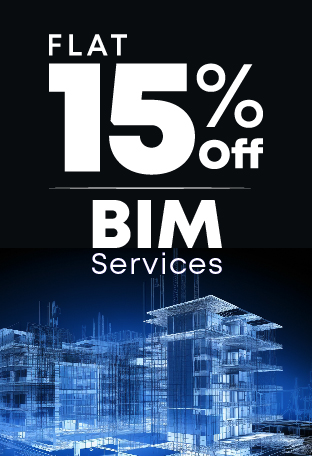With the construction industry and organizations realizing the worth of BIM (Business Information Modeling) are forming strategies for BIM adoption. Hence, BIM is now replacing the conventional and historic ways of building, designing and operating facilities. By using data-driven software and applications the construction firms are being able to streamline and collaborate work processes throughout the life cycle of every project. This novel product has the ability to facilitate the most cost-effective ways of producing constructive problem solving, efficacious communication and a swifter construction process.
Though the long-term benefits of adopting BIM have been indisputable, there have been a few discerning roadblocks in the adoption of BIM. The organizations that incorporated the BIM approach in the past perceived many challenges. The product being new was considered to be complex and people lacked expertise. The managers very used to the traditional ways of building and designing found it a task to adhere to rigorous guidelines and processes. In addition to all these challenges, they would worry about the cost of the software and those incurred post implementation of BIM. After all, they are making a huge set of modifications in the work process.
In any industry, when implementing a new approach or an idea, it is the culture of execution that often defines success. For BIM implementation to be effective, it needs to be customized and assessed for every different situation. Hence, the organizations need to be open-minded and adaptive to the transformation.
Here are the different steps that you need to embrace and rationalize in order to execute a successful adoption of BIM, which can then result in a measurable enhancement in both efficiency and productivity.
The BIM process is different: Accept and adopt with open arms:
BIM is a new product. It is a new way of thinking hence it is a learning process. Since it is becoming extremely crucial to adopt the BIM process, we have to be open-minded and replace the old-fashioned way of building and designing with a more streamlined work process. When you accept that BIM is different and it involves some amount of effort to adopt it, you will be able to ensure a smoother and a more effective transition.
Evaluate the current potential and the reason for the switch:
Evaluating the current potential of BIM in the different fields of your organization (people, process and technology) will define the starting point for you. You need to study each of these fields to understand how BIM will make an impactful difference. There are unquestionable benefits of BIM but you must understand why you are switching to BIM. The reason for you may differ from that of your competitor. To gain the most benefits, stay focused on the ones that are most significant to you. This will help you set both the long-term and short-term goals and in turn measure the progress at every step and stay motivated as and when you achieve them.
Post-Evaluation: Stepping into the process:
After you have defined your reasons to adopt BIM and set your current goals you need to start implementing. BIM is technology driven: hence you need software applications and solutions and meet the hardware essentials. You need to identify the features you will be using for different processes. This adoption of technology will help you to tackle information more efficiently. Your employees will need to be trained on software application and their roles will be redefined as per the BIM model.
When stepping into and shaping the BIM process, do not hesitate to seek help and take suggestions from a guide – be it your friend or another employer who has already implemented and made the transition. Reading informative blogs and articles on it. This will ensure an easier transition.
Take your time: This isn’t a race of who gets there first:
You can choose different ways of BIM adoption; you can either implement it through a single project or go all the way. The point is to find a strategy that works best for you and your entire organization. As we said, this isn’t a race of who gets there first. It’s how effectively and successfully you can implement it for your situation and reap countless benefits from it.
For more great advice on a smooth and effective transition to BIM, Connect with us. Our super-skilled professionals will help you formulate a brilliant strategy to help you join the BIM marathon.







 How AI BIM Modeling Shaping the Future of Residential Construction?
How AI BIM Modeling Shaping the Future of Residential Construction?  How BIM Services Enhance Collaboration, Design Choices, and Project Efficiency for Architects? – A Guide
How BIM Services Enhance Collaboration, Design Choices, and Project Efficiency for Architects? – A Guide  How is Artificial Intelligence in Construction Design Transforming Architectural Landscape?
How is Artificial Intelligence in Construction Design Transforming Architectural Landscape?  BIM Coordination Benefits for Contractors in the Preconstruction Stage
BIM Coordination Benefits for Contractors in the Preconstruction Stage